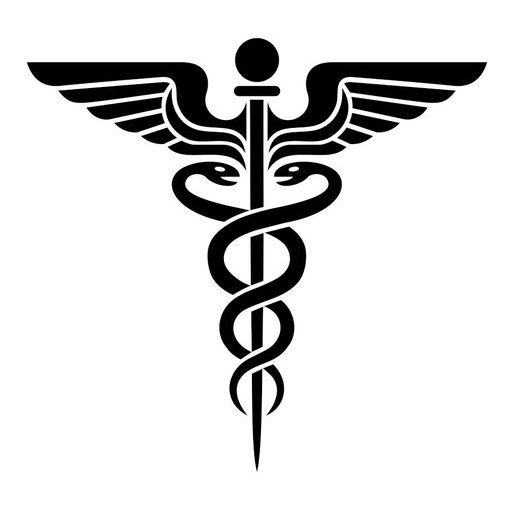Written by Nikolina Nikolaou
Benign prostatic hypertrophy is a non-malignant condition that is characterized by the enlargement of the prostate gland. Males suffering from BPH often experience both obstructive (urinary hesitancy, straining or prolonged voiding) and irritative (increased urination and nocturia) lower tract symptoms (LUTS). The risk of developing BPH increases with age and the symptoms vary from mild to severe. In BPH men’s prostate gland begins to grow due to an increase in volume of epithelial and stromal (connective tissue) cells. As prostate gland is located just below the bladder this continued growth compresses the urethra and limits the flow of urine causing the urinary symptoms to be noticed. If left untreated, BPH can increase the susceptibility to urinary and bladder infections as well as kidney stones. Factors influencing the prostate to enlarge are still poorly understood. However, dihydrotestosterone (DHT), a metabolite of testosterone, is believed to be a key mediator in prostatic hypertrophy. Through the activity of an enzyme called 5-reductase, DHT is produced from testosterone in particular body tissues including the prostate gland. Normally, DHT binds to nuclear androgen receptors and causing the transcription of genes that are mitogenic for both stromal and epithelial cells.
Scientists after reviewing various reports of randomized, double-blind and placebo-controlled trials they have accepted a standard care medical therapy for the treatment of BPH. This therapy includes the efficacy of a 5-ARI (5- reductase inhibitor) finasteride and terazosin, an -blocker as they significantly improved lower tract symptoms and increased the peak urinary flow rates in sick individuals by inhibiting the conversion of testosterone to DHT. However, another treatment option was revealed during this time, the herbal therapy. Today, there are about 30 compounds with phytotherapeutic effects widely used to treat and alleviate the symptoms of BPH, with the most promising of all to be an extract from the berry of the American saw palmetto or dwarf palm plant, Serenoa repens (sold under its botanical name Sabal Serrulatum). Many western countries use this herb due to its antiandrogenic/antiestrogenic, anti-inflammatory and antiproliferative properties. Interestingly, studies have also shown the effectiveness of Serenoa repens in treating a type of baldness (androgenic alopecia) in both males and females as it acts by inhibiting the action of the DHT androgen. [2]
One of the major bioactive ingredients of saw palmetto’s fruit is a group of lipids (fats) which influence hormone function and have diuretic, antiseptic and gland-influencing properties. Further investigations show that SR berries also possess anti-inflammatory and anti-exudative properties as it is made up from primary and secondary metabolites like:
Carbohydrates: Polysaccharides with an acid character: galactose (38.4%), arabinose (18.7%), uronic acid (14%), invert sugar (28.2%) and mannitol.
Sterols: beta-sitosterol, beta-sitosterol-3-O-beta-D-glycoside, beta-sitosterol-3-o-beta-D-diglycoside and several esters of beta-sitosterol with saturated fatty acids, campestrol and stigmasterol.
Flavonoids: Isoqueercitrin, rutin, kaempferol-3-O-beta-D-glucoside and rhoifolin.
Triglycerides and fatty acids: Capric acid, caproic acid, caprylic acid, lauric acid, myristic acid, oleic acid, myristoelic acid and palmitic acid.
*Please conduct your doctor before taking Serenoa Repens as myristoleic acid is a cytotoxic component which induce apoptosis and necrosis in human prostatic LNCaP cells.
However, many other substances are known to contribute to the effectives of this sacred plant including; Volatile oil, anthranilic acid, carotene, resin, and tannin [3].
To keep your prostate healthy and happy, look for saw palmetto supplements standardized to 85-95% fatty acids and sterols. The recommended dosage in patients presenting with mild to moderate symptoms of LUTS is 160mg per 1 softgel and the minimum dosage of 2 pills which is equal to 320mg daily.
The drug should be taken with morning and evening meals to minimize possible gastrointestinal disturbances.
Currently, saw palmetto can be taken in many forms but when taken as a dried supplement or an oily liquid extraction its effectiveness increases. Though, doctors believe that some versions of saw palmetto such as powder, root or berry which typically comes in a capsule form (pills) are not as strong as a liquid form (tea) as they do not contain any active ingredient.
The listed side-effects of serenoa repens are rare, although headache, nausea, abdominal pain, decreased libido and rhinitis have been reported over the years. Based on a systematic review trial more serious adverse effects such as death and cerebral hemorrhage has been noticed, also when referring to the long-term consequences of serenoa repens we should be aware of liver and pancreatic damage.
In Europe, phytotherapeutic preparation of serenoa repens fruit extracts are mainly prepared with hexane, ethanol or supercritical CO2 combined with vitamins and/or minerals for over 30 years. Based on a controlled clinical trial in men with BPH, the efficacy of serenoa respens was visible as men who administered orally 160mg of extract had improved symptoms such as dysuria (frequency decreased by 33 to 74%) and peak urinary frequency flow (increased by 26 to 50%). Placebo controlled trials and meta-analysis have suggested that saw palmetto leads to subjective and objective improvement in men’s health [2].
After investigating its success, Serenoa repens has been employed in European phytotherapy for the relief of symptoms related with BPH. Today, saw palmetto is highly recommended by physicians for prostate disorders as it is a well-tolerated drug with great efficacy in every medical hoop.
Bibliography:
[1] Plosker, G.L., Brogden, R.N. Serenoa repens (Permixon®). Drugs & Aging 9, 379–395 (1996). https://doi.org/10.2165/00002512-199609050-00008
[2] Medicinehunter.com. (2022). Saw Palmetto: A Prostate’s Best Friend | Medicine Hunter. [online] Available at: https://www.medicinehunter.com/saw-palmetto-prostate%E2%80%99s-best-friend?fbclid=IwAR1lfk_2yyYVG_AEVwMOVwVyKgcsBokohB0eK4g4-E4gEHBuUeCyY7QI548 [Accessed 28 Aug. 2022].
[3] Laekeman, G. and Vlietinck, A. (2015). Assessment report on Serenoa repens (W. Bartram) Small, fructus. European Medicines agency science medicines health, [online] p.90. Available at: https://www.ema.europa.eu/en/documents/herbal-report/final-assessment-report-serenoa-repens-w-bartram-small-fructus_en.pdf?fbclid=IwAR0zChssdSJHlo6STr-lPil5Zll_QNaDvBpdQm07L7QFsjEKXVQ-nmb_De4.
[4] Repens, S. (1999). Committee for veterinary medicinal prdocuts. [online] Available at: https://www.ema.europa.eu/en/documents/mrl-report/serenoa-repens-summary-report-committee-veterinary-medicinal-products_en.pdf?fbclid=IwAR3GKiWvuCpqr7NyXJUyEyWPuynTyXPRJ5oMowjI-QkJAUBt6M6v7cR3U7c#:~:text=The%20fruits%20of%20Serenoa%20repens,essential%20oils%20and%20anthranilic%20acid.
[5] Kwon, Y. (2019). Use of saw palmetto (Serenoa repens) extract for benign prostatic hyperplasia. Food Science and Biotechnology, 28(6), pp.1599–1606. doi:10.1007/s10068-019-00605-9.
